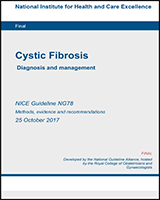From: 11, Prevention of cross infection

NCBI Bookshelf. A service of the National Library of Medicine, National Institutes of Health.
| Outpatient care: Comparison 1. Cohort segregation by clinic times versus no cohort segregation | ||||||
|---|---|---|---|---|---|---|
| Outcomes | Illustrative comparative risks* (95% CI) | Relative effect (95% CI) | No of Participants (studies) | Quality of the evidence (GRADE) | Comments | |
| Assumed risk | Corresponding risk | |||||
| No cohort segregation | Cohort segregation into different pathogens by clinic times | |||||
| 10-year incidence of P aeruginosa infections. Follow-up: 10 years | 778 per 1000 | 622 per 1000 (404 to 941) | RR 0.8 (0.52 to 1.21) | 39 (Hayes 2010) | ⊕⊕⊝⊝ low1,2 | |
| 4-year prevalence of MRSA (percentages) Follow-up: 4 years | 1% | 1.3% | ns | ≈2,837 sputum cultures (McKay 2009)4 | ⊕⊝⊝⊝ very low3 | |
| 4-year prevalence of non-mucoid P aeruginosa (percentages) Follow-up: 4 years | 22.3% | 22.7% | ns | ≈2,837 sputum cultures (McKay 2009)4 | ⊕⊝⊝⊝ very low3 | |
| 4-year prevalence of mucoid P aeruginosa (percentages) Follow-up: 4 years | 5.9% | 1.0% | P=0.001 | ≈2,837 sputum cultures (McKay 2009)4 | ⊕⊝⊝⊝ very low3 | |
| Staff compliance (percentages) Follow-up: 4 years | - | Adherence to the “coloured” clinic booking scheme: % of children attending the red clinic who were 5 and under: 2004: 96.8%; 2005: 97.5%; 2006: 94.4%; 2007: 95.9% | Not estimable | N not reported (McKay 2009)4 | ⊕⊝⊝⊝ very low3 | Narrative data |
The basis for the assumed risk (e.g. the median control group risk across studies) is provided in footnotes. The corresponding risk (and its 95% confidence interval) is based on the assumed risk in the comparison group and the relative effect of the intervention (and its 95% CI).
Abbreviations: CI: confidence interval; MRSA: methicillin-resistant S aureus; ns: not significant; RR: risk ratio
The quality of the evidence was downgraded by 1 due to unclear randomisation, allocation concealment, blinding, incomplete data outcome and selective reporting
The quality of the evidence was downgraded by 1 because the 95% CI crossed 1 default MID
The quality of the evidence was downgraded by 2 because of high risk of bias in relation to sample selection, comparability between groups and outcome reporting
Intervention group: data for the period 2004 to 2007; comparison group: data for the period 1999 to 2002. Intervention introduced in 2003.
From: 11, Prevention of cross infection

NCBI Bookshelf. A service of the National Library of Medicine, National Institutes of Health.